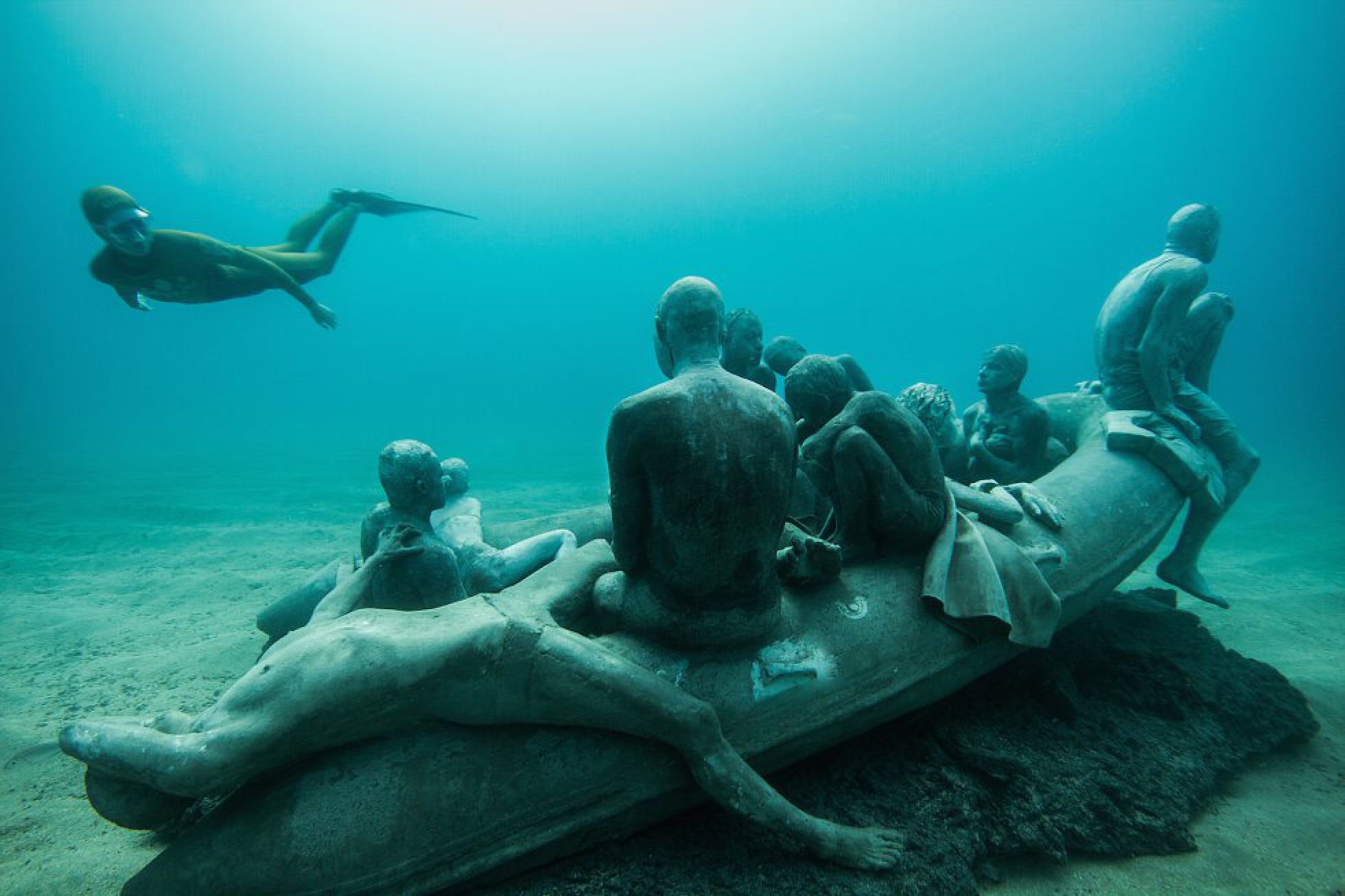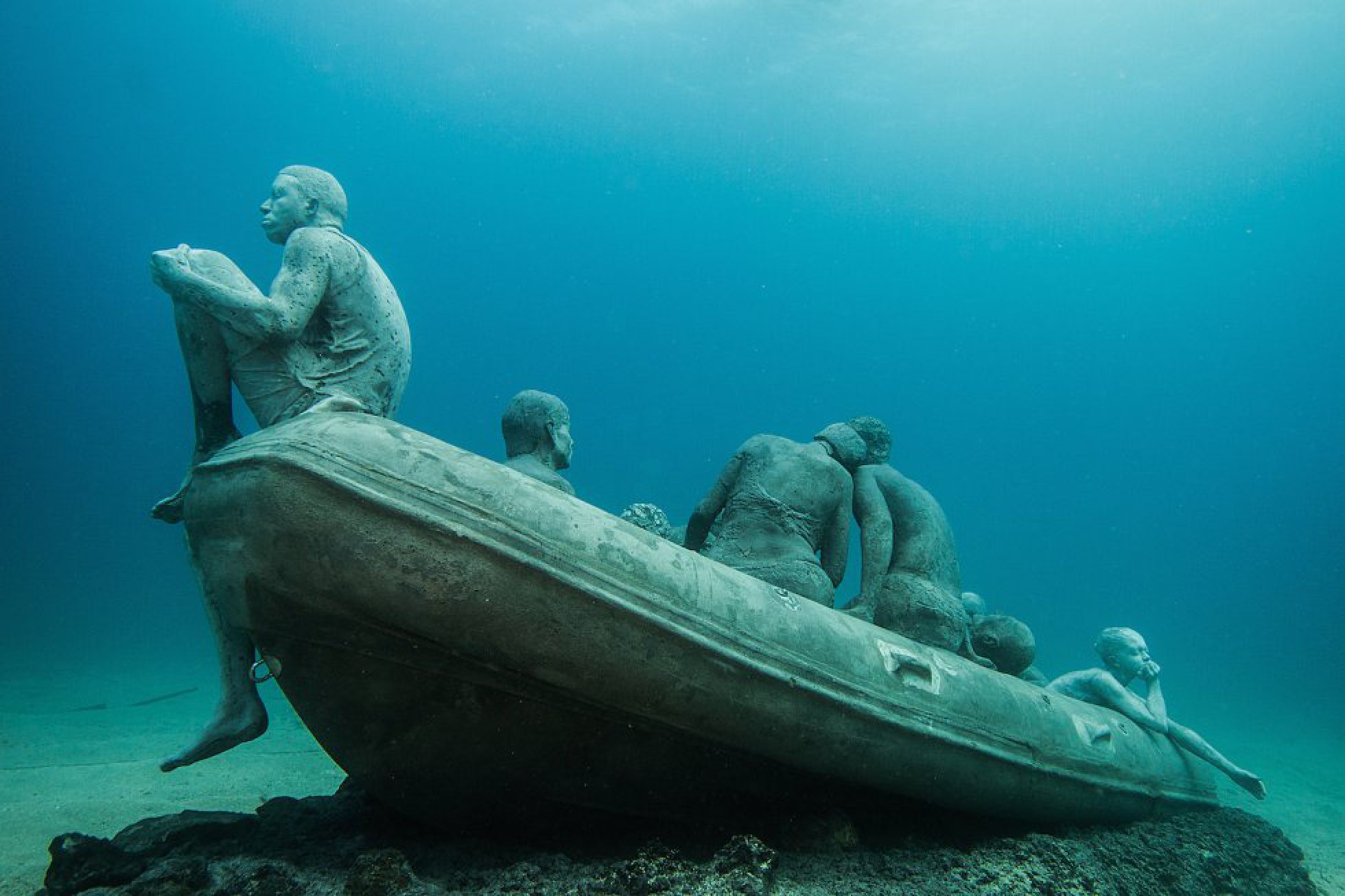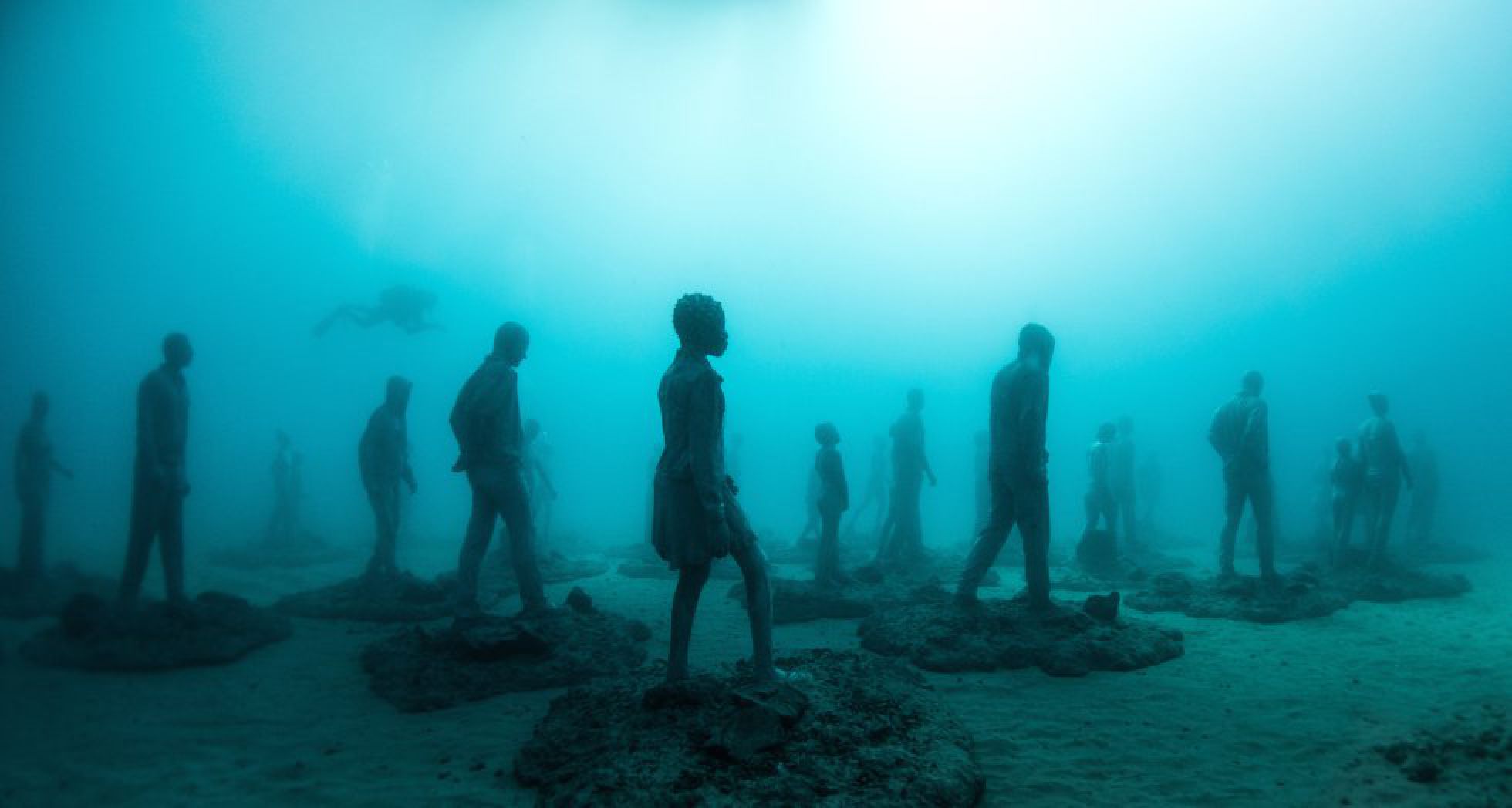
There is a rather unusual museum on the Canarian island of Lanzarote. But visitors wanting to see the collection of sculptures created by British artist Jason deCaires Taylor will first have to put on a wetsuit and then dive 14 meters down to the seabed of Coloradas Bay, just off the coast of the town of Yaiza, in the southwest of the island.
Jason deCaires Taylor says his sculptures are a way to bring people into contact with the sea, as well as to make them more aware of the dangers our oceans face. At the same time as the figures tell a story, they help to protect the seabed. He also points out that the materials he has used are not harmful to their environment and he wants to help coral and other species to grow, which can help repopulate the marine biomass.
This isn’t Taylor’s first sub-aquatic venture. Around 500 of his pieces are already lying offshore in the warm waters off the coast of Cancún, on Mexico’s Caribbean coast.
When the local authorities in Lanzarote heard about Taylor’s work, they invited him to take part in the island’s biennial arts festival.
“As we knew it wasn’t impossible, we did it,” says José Juan Lorenzo, head of Lanzarote’s arts, culture and tourism department, which is responsible for running the museum.


“Taylor is a pioneer, an innovator,” says Lorenzo, highlighting Lanzarote’s long-standing support for the arts, best known via the work of local artist Cesar Manrique. “Lanzarote, thanks to the work of Cesar Manrique, has a long tradition of land art. The seabed here is as beautiful as the land, and so an initiative that highlights its importance, its fragility, its beauty, seemed perfect to us.”


Along with his family, Taylor has spent the last two years on Lanzarote preparing the seabed for the installation. While waiting for the paperwork, he has created images in his workshop there such as The Lampedusa Raft, a homage to refugees who flee their countries by sea.